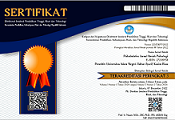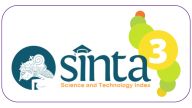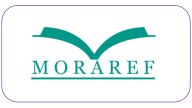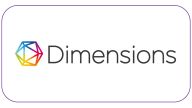Validitas Konstrak Skala Kecanduan Media Sosial
Abstract
Kecanduan media sosial merupakan salah satu topik penting yang dibahas sekarang.Pengukuran kecanduan media sosial sudah banyak dilakukan oleh para ahli psikologi dengan menggunakan instrumen pengumpulan data berupa skala yang disusun dari aspek yang berbeda-beda. Penelitian ini bertujuan untuk menganalisis validitas konstrak Skala Kecanduan Media Sosial yang dikembangkan oleh Al Menayes (2015) berdasarkan konsep Young (1996). Subjek penelitian sebanyak 150 mahasiswa pengguna media sosial lebih dari 3 jam sehari. Subjek penelitian diperoleh menggunakan teknik non random sampling yaitu accidental sampling. Analisis data dilakukan menggunakan analisis faktor konfirmatori dengan bantuan program AMOS 6. Hasil penelitian menunjukkan ketiga aspek (konsekuensi sosial, pengalihan waktu dan peasaan kompulsif) memenuhi kriteria fit model pengukuran, artinya, secara umum aitem-aitem yang berada pada setiap komponen mencerminkan kevalidan dalam mencerminkan setiap komponen. Hasil penelitian akan dibahas dalam konteks pengukuran psikologi
Keywords
Full Text:
PDFReferences
Al-Menayes, J (2014) “The relationship between mobile social media use and academic performance in university students,” New Media and Mass Communication, 2523–29, 2014.
Al-Menayes, J (2015a), “Dimensions of social media addiction among university students in Kuwait,” Psychology and Behavioral Sciences, 4, (1),23–28, doi: 10.11648/j.pbs.20150401.14
Al-Menayes, J (2015b). Psychometric Properties and Validation of the Arabic Social Media Addiction Scale, Journal of Addiction http://dx.doi.org/10.1155/2015/291743
Andraessen, C. S., Tosheim, T., Brunberg, G. S., & Pallesen, S. (2011) Development of Facebook Addiction Scale. Psychological Reports, 110, 501-517.
Beard, K.W. dan Wolf. E.M. (2001).Modification in the proposed diagnosis criteria for internet addiction. CyberPsychology & Behavior, 4, 377‐383.
Griffiths MD (1996) Behavioral addictions: An issue for everybody? Journal of
Workplace Learning, 8: 19–25.
Hawi, N.S & Samaha, M (2016). The Relations Among Social Media Addiction, Self-Esteem, and Life Satisfaction in University Students. Science Computer Review, 35 (5), : 576-586, https://doi.org/10.1177/0894439316660340
Hing Keung Ma, 2011. Internet Addiction and Antisocial Internet Behavior of Adolescents. Research Article The Scientificworld JOURNAL 11, 2187–2196. doi:10.1100/2011/308631
Jap T, Tiatri S, Jaya ES, & Suteja MS (2013) The Development of Indonesian Online Game Addiction Questionnaire. PLoS ONE 8(4): e61098. doi:10.1371/journal.pone.0061098.
Kırcaburun, K (2016). Self-Esteem, Daily Internet Use and Social Media Addiction as Predictors of Depression among Turkish Adolescents. Journal of Education and Practice 7, (24), 64-72
Lin Y-H, Chang L-R, Lee Y-H, Tseng H-W, Kuo TBJ, et al. (2014) Development and Validation of the Smartphone Addiction Inventory (SPAI). PLoS ONE 9(6): e98312. doi:10.1371/journal.pone.0098312
Maheswari, J & Dwiutamai, L.(2013) Pola Perilaku Dewasa Muda yang Kecenderungan Kecanduan Situs Jejaring Sosial. Jurnal Penelitian Psikologi, 2, (1), 51-62
Na Ri Kim, dkk ,(2016). Characteristics and Psychiatric Symptoms of Internet Gaming Disorder among Adults Using Self-Reported DSM-5 Criteria. Psychiatry Investig13(1):58-66 http://dx.doi.org/10.4306/pi.2016.13.1.58.
Nurmandia, H, Wigati, D & Masluchah, L (2013). Hubungan Antara Kemampuan Sosialisasi Dengan Kecanduan Jejaring Sosial . Jurnal Penelitian Psikologi , 4, (2,) 107-119
Pavia, L, Cavani,P , Di Blasi, .M & Giordano, C (2016) Smartphone Addiction Inventory (SPAI): Psychometric properties and confirmatory factor analysis Computers in Human Behavior 63 (2016) 170-178
Soliha, S.F (2015) Tingkat Ketergantungan Pengguna Media Sosial Dan Kecemasan Sosial Jurnal Interaksi, 4 (1),1 – 10
Shotton, M., (1991). The costs and benefits of "computer addiction." Behaviour and Information Technolonv. 10. 219-230.
So-kum Tang, C & Woen Koh, Y (2016) Online social networking addiction among college students in Singapore: Comorbidity with behavioral addiction and affective disorder .Asian Journal of Psychiatry 25, 175–178, http://dx.doi.org/10.1016/j.ajp.2016.10.027
Van Rooij, A.J And Prause, N (2014) A Critical Review Of “Internet Addiction” Criteria With Suggestions For The Future. Journal Of Behavioral Addictions 3(4), Pp. 203–213 (2014) Doi: 10.1556/Jba.3.2014.4.1
Widyanto, L & Griffiths, M, (2006 ). ““Internet addiction”: a critical review,” International Journal of Mental Health Addiction, 4, (1) 31–51.
Widyanto, L. and McMurran, M. (2004). The psychometric properties of the Internet addiction test. Cyberpsychology and Behavior, vol. 7, 443-450.
Young. K S (1996) Internet addiction: the emergence of a new clinical disorder. Paper presented at the 104th annual convention of the American Psychological Association, Toronto, Canada.
DOI: http://dx.doi.org/10.24014/pib.v4i2.21746
Refbacks
- There are currently no refbacks.
Redaksi Psikobuletin: Buletin Ilmiah Psikologi
Publisher: Universitas Islam Negeri Sultan Syarif Kasim Riau
Jl. H.R. Soebrantas Km. 15.5 No. 155 Gedung Fakultas Psikologi UIN Sultan Syarif Kasim Riau Kel. Tuahmadani Kec. Tampan Pekanbaru - Riau 28293.
E-mail : psikobuletin@uin-suska.ac.id / Website :http://ejournal.uin-suska.ac.id/index.php/Psikobuletin
Psikobuletin : Buletin Ilmiah Psikologi by Fakultas Psikologi is licensed under a Creative Commons Attribution 4.0 International License.



31.png)





